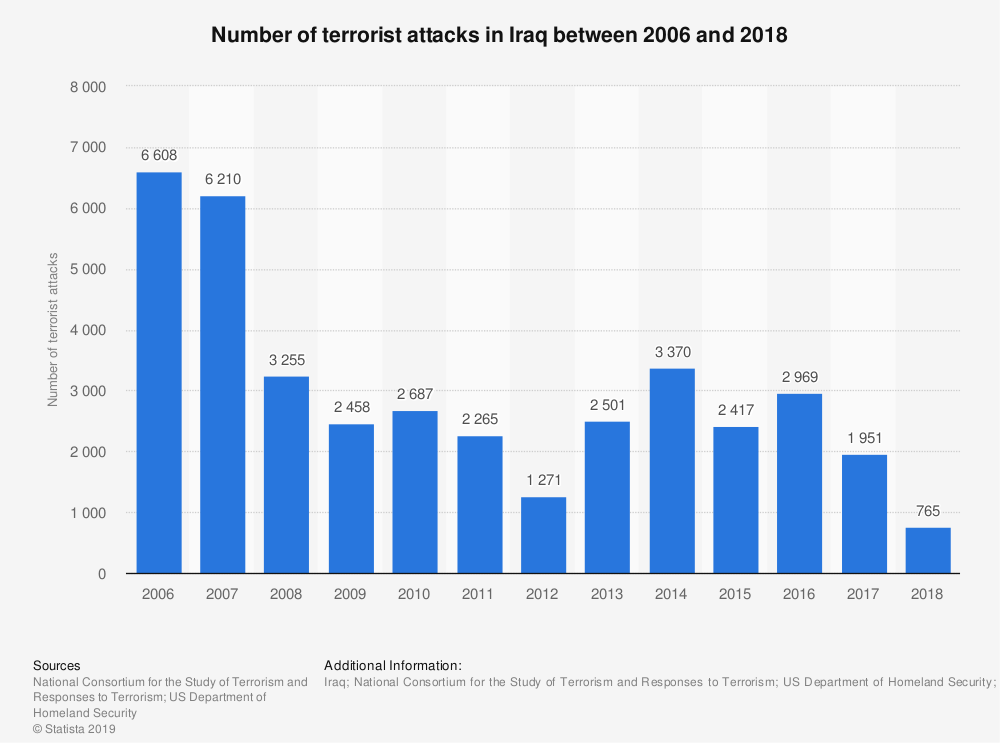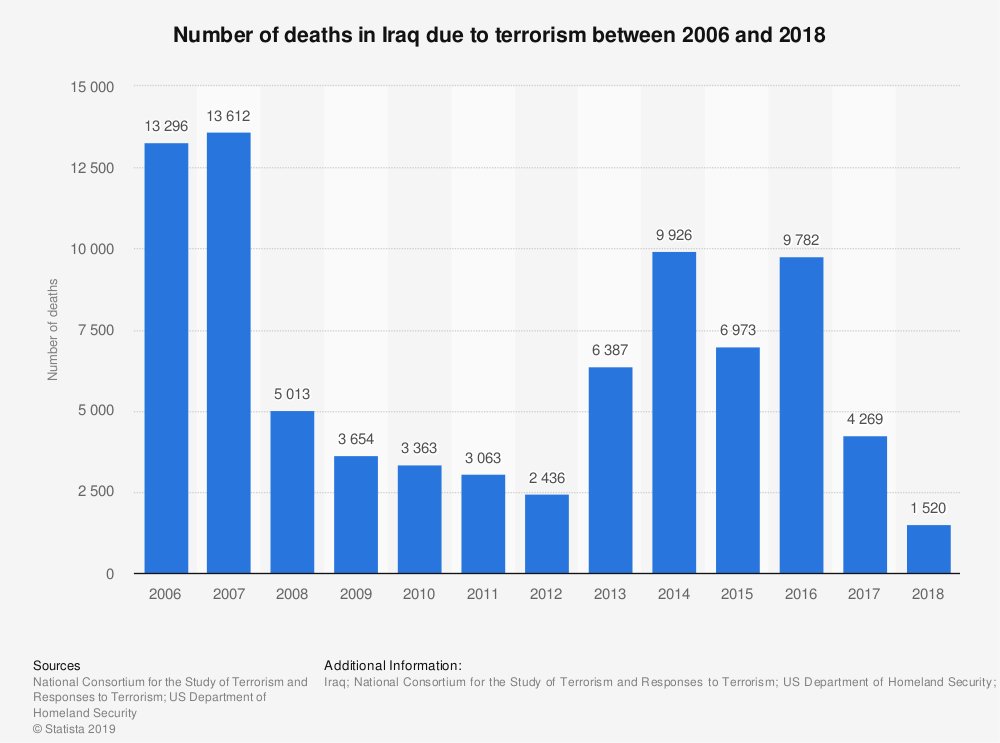A review of data on armed insurgency threat dynamics attempts to answer this question.
If armed insurgency threat to foreign troops can be predicted, deployment and exit strategy for conflict-stabilisation and peace-keeping forces may require rethinking.
In an internal armed conflict, indigenous security forces and domestic insurgents will at some point collude to oust a foreign expeditionary force.
That´s what game-theoretic reasoning posits, as described in Brightman´s model.
But will actual data refute this inference?
That´s right. The aim of this assessment is NOT to try and confirm the model.
Rather, it´s the opposite – to see if even readily available and limited data sets will refute it.
In academia, there is no difference between academia & the real world.
In the real world, there is.Nassim Nicholas Taleb
(inspired by Yogi Berra)
In theory, there is no difference between theory and practice.
In practice, there is.Angela Jiang
Contents.
- Main postulates of Brightman´s model for the prediction of armed insurgency threat dynamics in Iraq.
- Some key questions raised by Brightman´s model.
- Refuting Brightman´s model using historic data on armed insurgency threat dynamics in Iraq.
- Refuting Brightman´s model using historic data on armed insurgency threat dynamics in Afghanistan.
- Refuting Brightman´s model validity for predicting armed insurgency threat dynamics in Syria.
- Conclusions.
- Sources and scope of data.
1. Main postulates of Brightman´s model for the prediction of armed insurgency threat dynamics in Iraq.
Dr. Heath J. Brightman is a professor (full) in the Civilian-Military Humanitarian Response Program, College of Maritime Operational Warfare, US Naval War College (Newport, Rhode Island).
In 2007, Brightman published a study called “Nash in Najaf – Game Theory and Its Applicability to the Iraqi Conflict” (Air & Space Power Journal, Fall 2017, pp. 35-41). In that article he made the following inference.
US and coalition forces will ultimately suffer casualties at an increasing rate the longer they remain in Iraq. This will occur because both Domestic Insurgents and Indigenous Security Forces will turn away from attacking each other towards a point of mathematical corruption. At this theoretical point, American and coalition troops will become the target of broad-based DI attacks, with intelligence frequently provided by ISFs.
Let´s kick off with a 30K-foot overview of Brightman´s reasoning that led him to the above inference. (To hear it straight from the horse´s mouth, look here.)
Oh, and by the way. I wrote to Dr. Brightman asking him to review this post in draft. The objective was to ensure that my summary of his model was correct. Professor Brightman kindly agreed and offerred some additional insight on the subject.
So, John Nash’s characterization of rational equilibrium behaviour is a key element in the study of strategic interaction. According to Nash, each player chooses strategies that are “best responses” to the strategies chosen by the other player.
If both players choose based on the same method, the outcome is a best response to a best response. Neither player will have the incentive to change its strategy.
Such a combination of strategies produces a stable behavioural prediction. It is called equilibrium – Nash equilibrium.
Mixed strategy equilibriums are guaranteed to exist in finite normal strategy games and have a peculiar common feature.
The probability that a player chooses a particular strategy is not a function of its own preference, but that of its opponent’s preference.
In Iraq prior to 2007, Domestic Insurgents (DI) conducted attacks against coalition troops and facilities, Indigenous Security Forces (ISF), infrastructure and civilians. Their aim was to weaken the resolve of the Iraqi authorities and coalition troops (Foreign Forces – FORFOR) to defeat them. DI did not have sufficient capability for defeating ISF. At least, as long as the latter were backed by FORFOR.
ISF conducted raids against DI to weaken their military capability and ultimately defeat it. However, ISF did not have sufficient muscle to achieve the latter on their own. And only possibly with long-term operational support by FORFOR.
FORFOR based its presence on a premise that at a minimum, it could prevent the take-over by DI. And at a maximum, tip the balance of force in favour of ISF to eventually achieve a military defeat of DI.
At the start, an extensive form game where players are engaged in multiple-move exchanges can have as an objective the achievement of a Pareto Optimal position. Which means, aiming at the highest aggregate payoff.
Such will be achieved under a preferred equilibrium reflecting a situation of reciprocal activity. An all-out effort will eventually lead to the complete defeat of one of the players. And the full victory of the other. The winner takes it all.
With time, however, the game stability is reduced by player frustration, fatigue and limited resources. The result often times is a strategy change that leads to game corruption. The new preference is to finish the game even with reduced expectations of payoff.
The game objective thus shifts to achieving Pareto Improved position, instead of Pareto Optimal.
- The OPTIMAL payoff is sought by reciprocal ACTIVITY.
- The IMPROVED payoff is sought by achieving counterpart PASSIVITY.
Pareto Improved position for DI is when their very threat to attack ISF and civilian targets if ISF continue its activity result in ISF opting for passivity.
Pareto Improved Position for ISF is when their very threat to attack DI if the latter continue their activity result in DI opting for passivity.
This shift in the perception of payoff makes the game change from a competitive to a cooperative one. Signalling and bargaining between DI and ISF begin.
The aim is to reach a tacit agreement to reciprocally limit hostile actions. The purpose of such an agreement is to set the rules for reciprocal passivity.
The point at which both players reach Pareto Improved position is referred to as Nash Equilibrium. At this point, players achieve the highest aggregate payoff, which has changed to become reciprocal passivity.
It is also described as inchoate (rudimentary, immature, embryonic) or interrupted equilibrium. Players reach an equilibrium prior to the conclusion of the game’s ultimate payoff.
Brightman´s key inference is that the perspective of DI and ISF reaching Nash equilibrium does not bode well for FORFOR.
Preference for a Pareto improvement means that ISF see their best payoff in reciprocal passivity. But FORFOR will keep pushing ISF towards a preferred equilibrium based on a Pareto Optimal position. Which means, prodding it into activity. DI wil have no choice but to – grudgingly – respond in kind.
Thus, FORFOR will act against the best interests of both players as determined by the outcome of their bargaining.
At this theoretical point, FORFOR will become the target of broad-based DI attacks with intelligence provided by ISF. Attacks will aim to inflict maximum casualties. The objective will be to intimidate FORFOR into withdrawal.
A good model is like good wine. It ages well. Thirteen years passed since Brightman published his study. It seems like a sufficient length of time to uncork it and take a sip.
Has its wisdom aged well or soured in the years?
What if Brightman´s model could reliably predict the dynamics of armed insurgency threat to international forces in any conflict?
If so, the concept underpinning the use of foreign expeditionary force for conflict stabilisation and peace-keeping might benefit from a rethinking.
As stated above, the intention is not to search for confirmatory evidence to prove that Brightman was right. That would lead into the trap of confirmation bias. Instead, the idea is to see if even easily available and limited data subsets will refute Brightman´s model.
But before going for the jugular, a short digression.
Disclaimer: what follows is not rigorous academic research. For what it´s worth, it´s more of a wet-finger-in-the-air kind of an assessment.
2. Some key questions raised by Brightman´s model.
The first question is about payoff quantification.
Political game theory is predicated on the idea that players pursue goals rationally. Subject to constraints imposed by physical resources and the expected behaviour of other actors.
But the very notion of rationality is a bit ambiguous.
Rationality is the ability to decide against preferring one option to another. Such behaviour in game theory is called thinly rational. Ay, there´s the rub… For choices of thinly rational agents can be affected by any number of factors. Including those rooted in their belief system.
Here is the point.
Brightman´s model involved predicting payoff preferences for players that rationally behave in accordance with their own belief system. But predicting foreign preferences can be easily affected by a mirror imaging bias. And as a consequence lead to an error in judgement.
This is the same reasoning conundrum that can have a corrupting influence on Multiple-Perspective Utility Analysis. A previous case study discussed it in some detail.
But here is some good news. Brightman has predicted payoff preferences for players using his in-theatre knowledge and reasoning skills of a highly experienced scholar. It doesn´t mean he must be right. But it does mean that his opinion can only be refuted from an even higher academic ground. Or by an actual radical Islamist.
Another question relates to Brightman´s inference of collusion between game players against a strange attractor.
Its consequence is DI stepping up attacks against FORFOR using intelligence leaked by ISF. Brightman´s model, however, does not suggest a situation of institutional collusion. It does not imply that at a particular moment in a game ISF as an institution is likely to make a considered choice to defect.
Intelligence leaks are well known to happen in all kinds of conflicts. Moreover, the leaking of intelligence from ISF to DI is ever-likely to have been occurring throughout the game. Be it for patriotic or religious reasons or through coercion.
Nor does Brightman´s inference imply that in a situation of a Nash equilibrium incidence rate of intelligence leaks will increase. He only posits that DI will peruse them more actively to step up their attacks against FORFOR.
Attempting to refute that inference would require seeking access to military intelligence. Or a testimony by a source inside DI. Either of which is likely to make this post subject to publication restrictions.
And here is the last question.
Brightman´s inference is that a shift from reciprocal activity to reciprocal passivity happens due to game corruption caused by player fatigue, lack of resources, etc.
But look at what has actually happened after FORFOR withdrawal.
Both in Afghanistan and Iraq, drawdown of US troops led to a resumption of DI activity that aimed at achieving a Pareto Optimal position.
How come player fatigue was so quickly overcome once FORFOR had left the conflict theatre?
Here is one possible answer.
May be, an ISF-DI collusion against FORFOR is not a product of a Nash equilibrium. Rather, an inchoate equilibrium itself may be a result of the evolution in players´relationship.
Both ISF and DI reflect vested stakes in the future of their nation-state. And despite all their differences, these national stakeholders may well evolve to coincide in the belief that an external non-player agent (strange attractor) should have no role in determining this their common future. And it is this shared understanding that leads to a Nash equilibrium.
Players determine payoffs—outcomes with real value to them —through a process called quantification. Only primary stakeholders with “skin in the game” (Taleb) can be such players. A strange attractor is someone who attempts to share in the gain through its proxy player without sharing in the pain of the sacrifice involved.
Anyway, it will be grossly unfair to try and refute Brightman´s model by speculating on what is absent from it. And unnecessary, too. What it actually includes gives more than enough food for thought.
So, the first case will be Iraq. Makes sense, right?
3. Refuting Brightman´s model using historic data on armed insurgency threat dynamics in Iraq.
Brightman published his research in early 2007. Let´s have a look at what happened in Iraq some time before and after that anchor date.
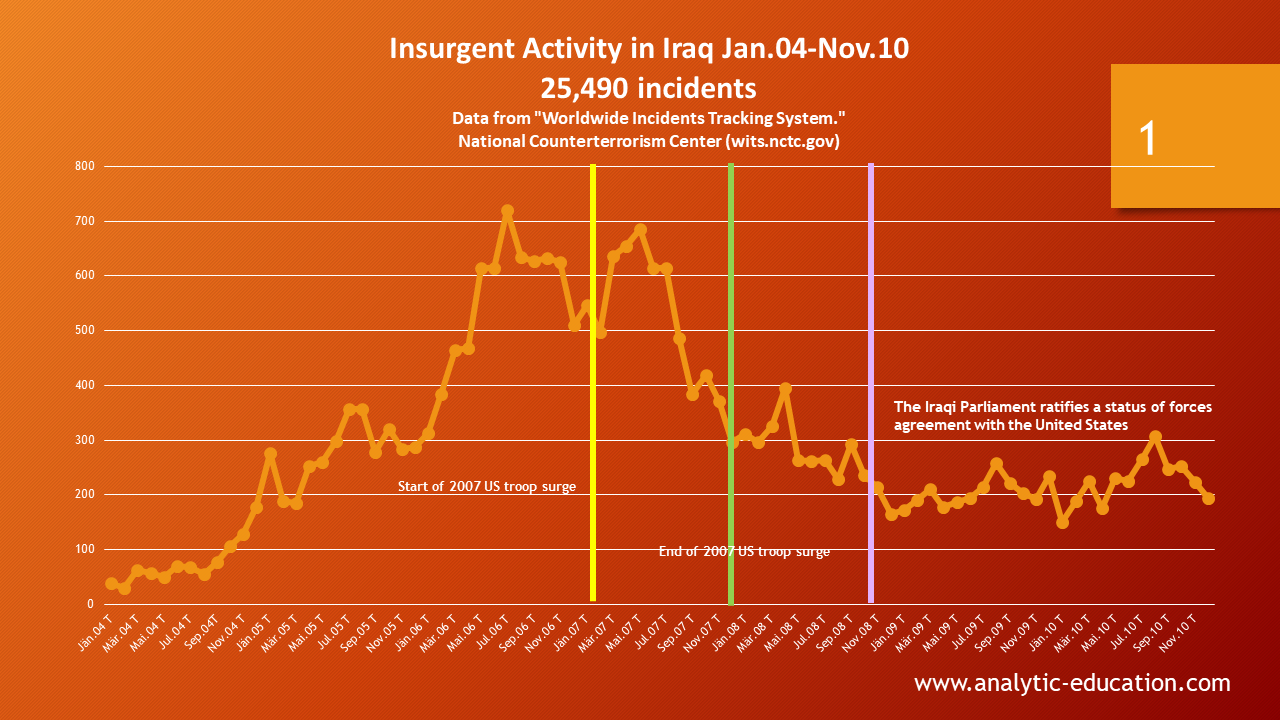
DI activity began rising fairly sharply starting from November 2005. It peaked in July 2006. And then went down by about a third. US troop surge began in February 2007. Right at the bottom of DI activity trough.
Once the troop surge began, DI activity picked up anew almost at once. It reached a new high only four months later. But then it went on a slide again. Towards the end of the US troop surge in December 2007 DI activity fell back all the way to November 2005 levels. Later on, in the process of US troop drawdown, monthly incident numbers kept bouncing up and down for about a year.
But the trend remained as good as flat-lined at lower activity levels.
In November 2008, the Iraqi Parliament ratified the status of forces agreement with the US. During the next four years, on an average, DI activity stayed at early-2004 levels.
Thus, 2009-2012 does not look like a time of high DI activity.
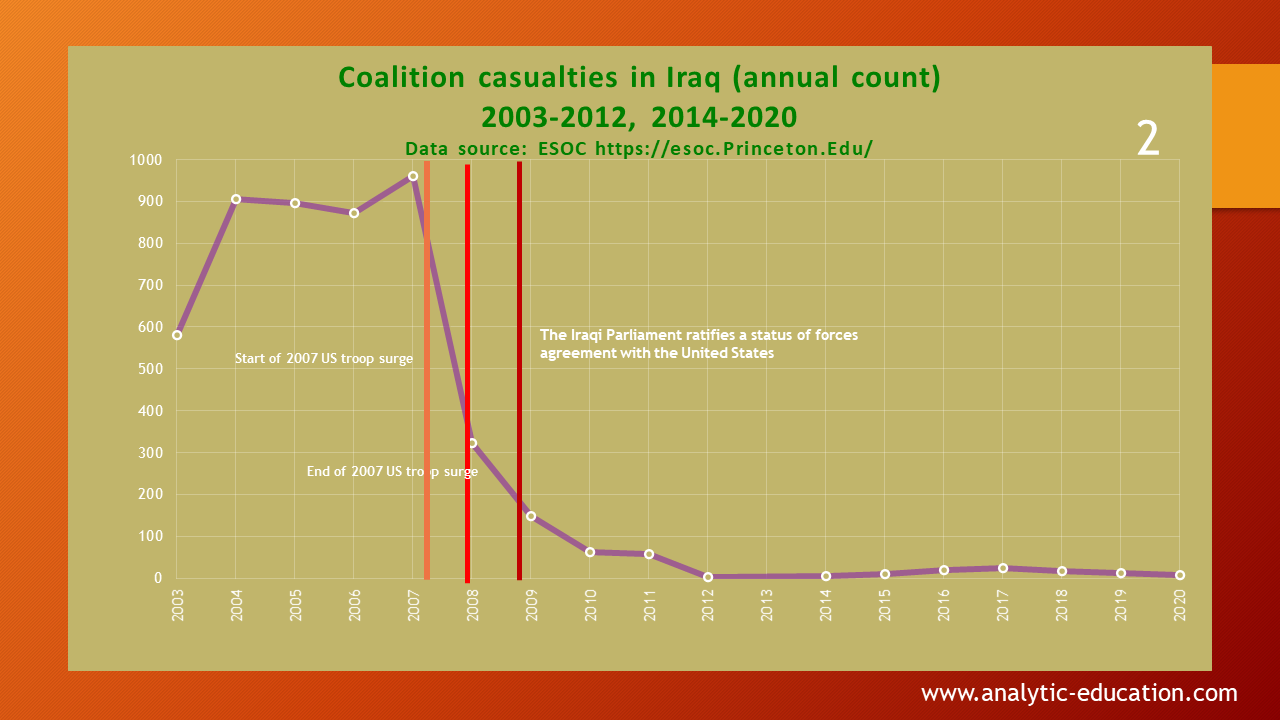
Measured on an annual basis, coalition casualties remained in the upper range during 2004-2007. Starting with the beginning of the troop surge, they plummeted down. Their plunge was a bit steeper and deeper than the decline in the DI activity.
Measured on a monthly basis, coalition casualty dynamics show significant correlation with DI activity. But if DI activity was principally directed against FORFOR it did not cause a spike in coalition casualties.
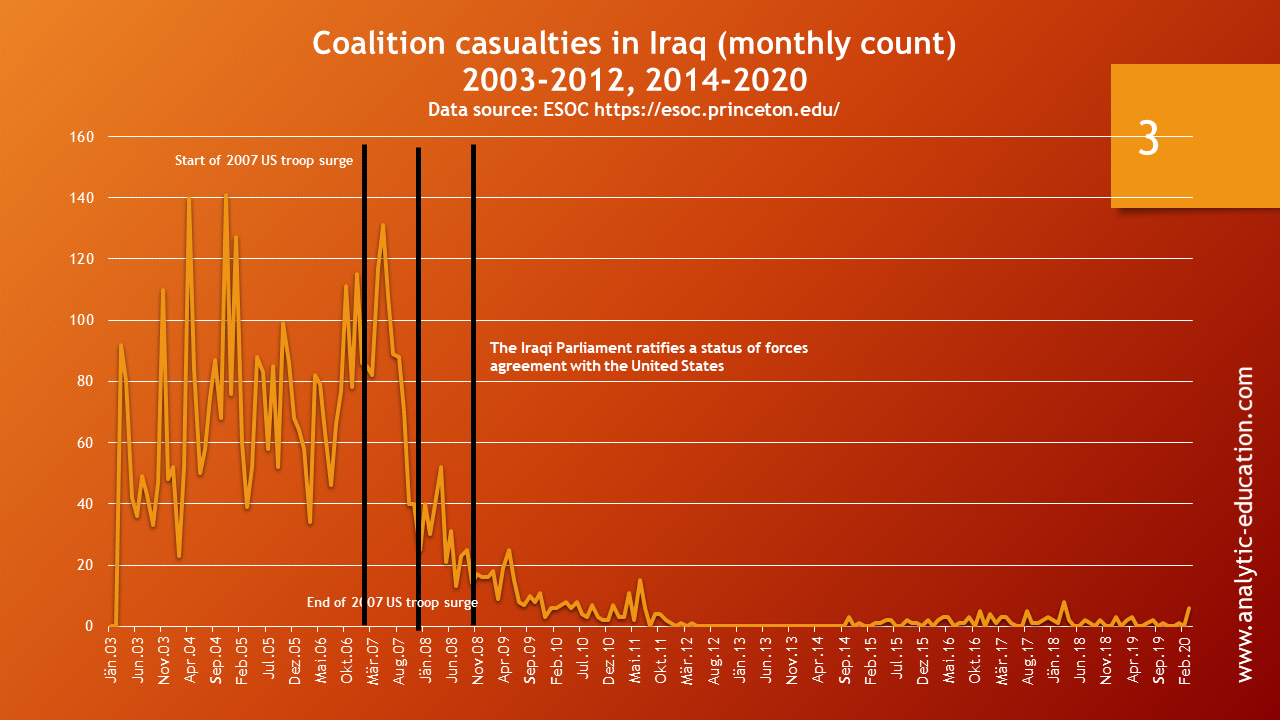
This absence of increase in casualties would seem to refute Brightman´s model. But it could also reflect a very different scenario.
What if FORFOR became aware of Brightman´s model and convinced itself that it offered a correct prediction. As a consequence, it recognised the threat of increase in casualties due to concerted DI attacks. Then, as a second-tier consequence, FORFOR took mitigating action of both proactive and compensatory kind.
That action could involve refocusing of counter-intelligence activity. More specifically, a denial and deception operation aimed at leaking to DI false and misleading intelligence.
It could also involve improvement of tactical defensive measures to better protect FORFOR troops from the attacks while on-base. As well as troop attack awareness training for off-base deployments.
One possible result would be that DI attacks wouldn´t result in an increase in FORFOR casualties.
So, when something did not happen that had been predicted to hapen, it could be that it did not happen PRECISELY BECAUSE it had been predicted to happen. Mitigating action resulted in the unfolding of an alternative future. BUT IT DOES NOT MEAN THAT THE PREDICTION ITSELF WAS WRONG.
In early 2014, armed insurgency threat in Iraq flared up again, this time under the flag of IS.
A new game started. US troops were redeployed.
In terms of DI activity, 2014-2016 averaged a bit under 3000 attacks a year. That´s less than half of the 2006-2007 levels.
Annualized number of indigenous DI victims was also some 35-40% lower.
Still, it´s a bit difficult to describe DI as being passive. But monthly casualties among US troops stayed in the single digits. FORFOR was ready for the challenge.
In a previous game, it stood up to reason that this trend might reflect the unfolding of an alternative future. There is hardly a ground to exclude such a possibility in this new game, too.
Then, during 2018-2020 DI activity against indigenous population gradually waned.
As of April 2020, a situation of reciprocal passivity between DI and ISF set in.
Insurgents continued strikes in Iraq´s disputed territories but at a very low level. The Iraqi security forces were holding back on raids.
The intensity of DI harassment of FORFOR as suggested by FORFOR casualty dynamics remained stable. Which seems to refute Brightman´s prediction once again, right?
Not necessarily. This dynamics (or lack thereof) can also reflect a continued unfolding of an alternative future triggered by acting on Brightman´s model.
In January 2020, a resolution of the Iraqi Parliament asked the government to end an agreement that hosted US troops. In terms of Brightman´s model, the continued activity of a strange attractor became an obstruction to players´ joint pitch at an inchoate equilibrium.
All in all, reviewed data on evolution of the armed insurgency threat to FORFOR in the Iraqi conflict does not refute Brightman´s model.
It doesn´t mean it´s proven to be good.
It only means that a particular subset of data does not disprove it.
4. Refuting Brightman´s model using historic data on armed insurgency threat dynamics in Afghanistan.
First, let´s go on a delve into the deep past. The Soviet war in Afghanistan.
Viewed superficially, it offers some basic parallels with the Iraqi conflict. A weak government that needs propping. A religiously motivated insurgency. A FORFOR fighting the insurgents for the government.
However, a data gap presents a major obstacle for a deeper analysis. Sufficiently detailed and complete Soviet-side data from a trusted source is nowhere evident. Afghan-side data does not seem to exist at all.
In the absence of data, down-to-earth reasoning favours citing purely military reasons for the withdrawal of Soviet troops. A single US move tipped the precarious tactical situation in favour of DI. Moreover, it painted the Soviet expeditionary force into a corner. And made its strategic position untenable.
The arming of insurgents with MANPADS deprived Soviet troops of tactical air support, rapid troop redeployment and theatre logistics capability. It became the straw that broke the camel´s back. Continuation of a war against religiosly impelled guerrilla forces in an unfamiliar, remote, hostile and punishing theatre became as good as impossible.
Using a game-theoretic construct instead seems here a bit of an overkill.
It is true, though, that intelligence haemorrhaging did affect Soviet military activity. And quite possibly pushed up combat casualties. Afghan army operators leaked intelligence like a sieve at all levels. But there is no evidence that Afghan ISF as an institution defected by controlling or centrally channeling intelligence leaks. The latter were not the result of any strategic deal with DI.
Much of intelligence leaking happened at tactical level. In a chaotic environment of a guerrilla war DI field commanders bought or coerced intelligence from provincial Afghan army staff officers.
Collaboration of the Afghan military with insurgents did not lead to DI passivity towards ISF, either. Between 1985 and 1989, Afghan army casualties quadrupled.
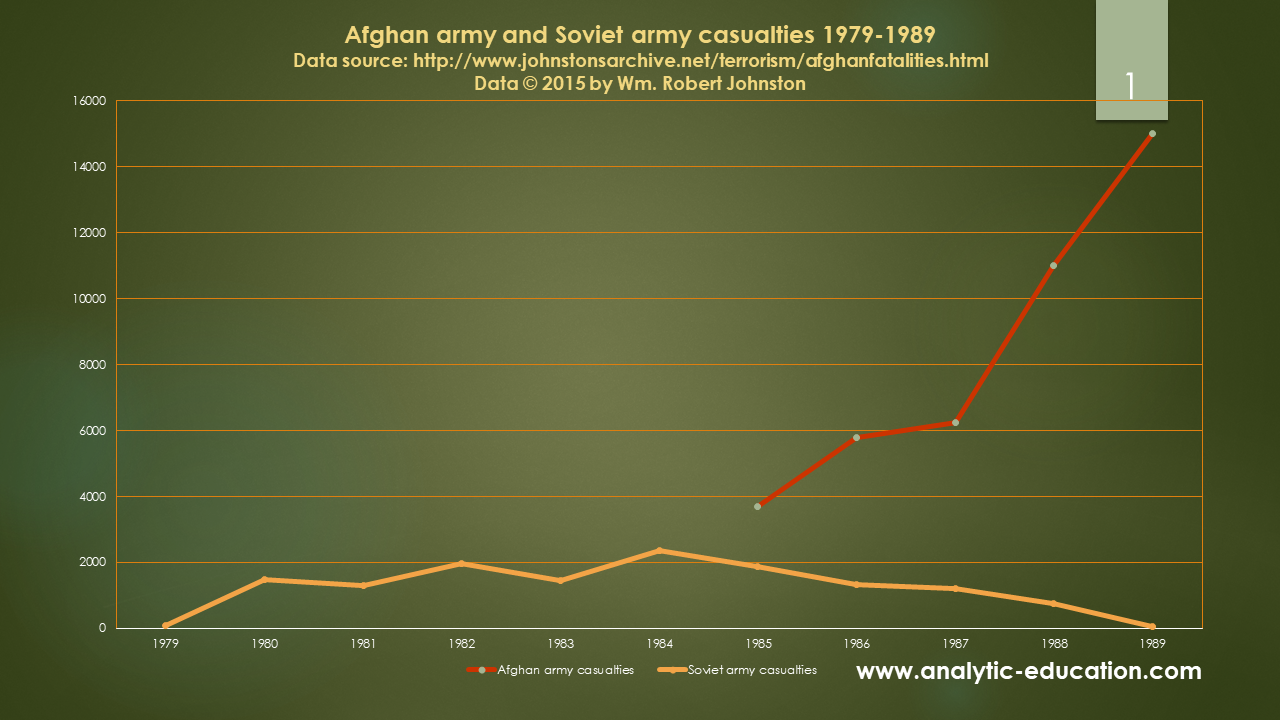
Now, let´s look at the US war in Afghanistan.
The first game lasted from 2001 till 2014 and ended with the withdrawal of US troops.
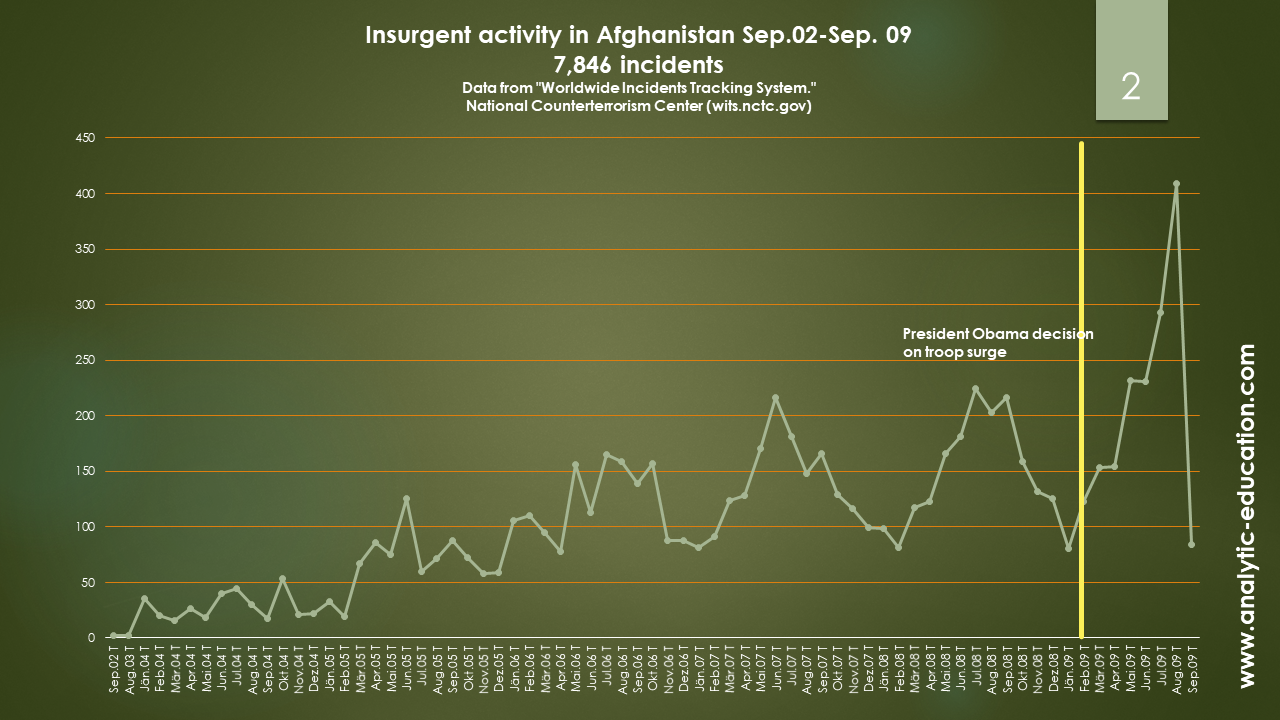
Insurgence activity against FORFOR peaked sharply in May-June 2009. An equally sharp drop followed lasting precisely until the December 2010 announcement of a US drawdown.
That in itself does not inequivocally refute Brightman´s model.
Strategic decision making can involve a lag between decision taking, which may be communicated to partners and operationalised, and its public announcement. That can explain a sharp peak in both DI activity and coalition casualties between April-June 2010.
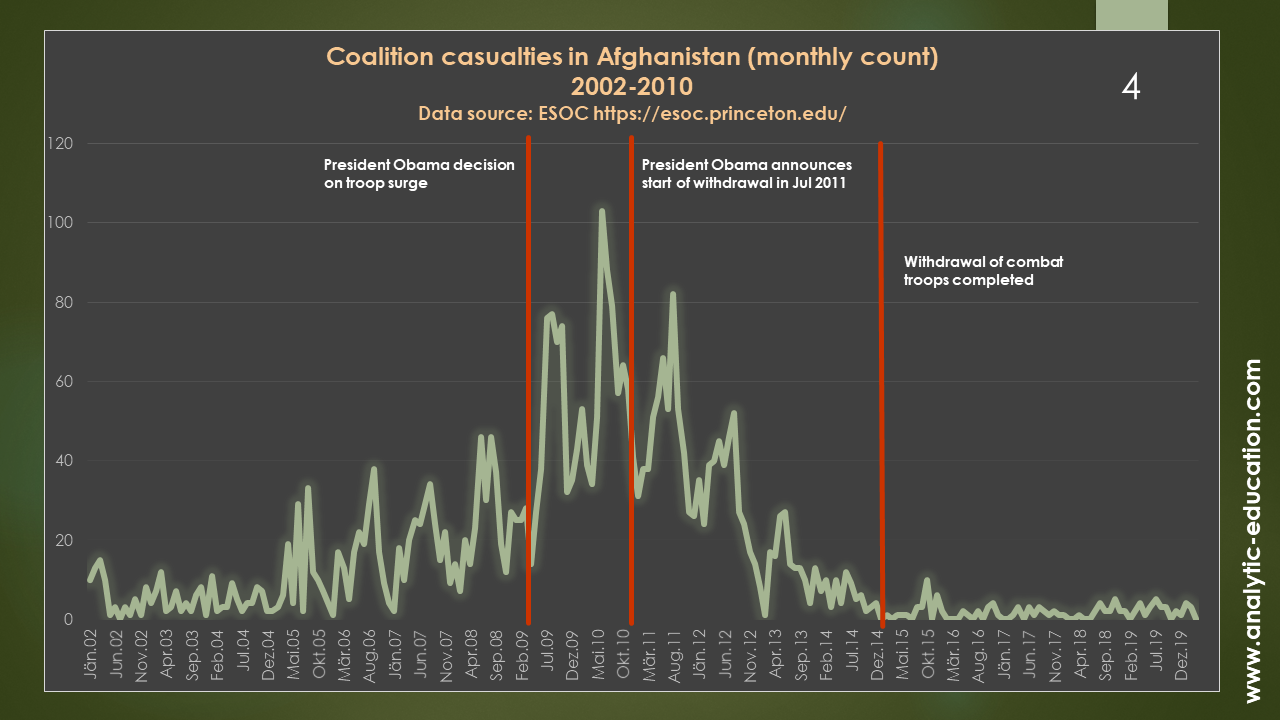
That period of high activity preceded the decision taking on drawdown. And it plausibly could aim at showing the US the consequences of deciding to keep troops in Afghanistan.
When looking at the DI-ISF interaction, the dynamics get a bit ambiguous.
According to Brightman´s model, ISF and DI would show a eciprocal reduction in activity. But instead, at least DI activity picked up. As reflected in a doubling of both Afghan army and police casualties during 2011-2013.
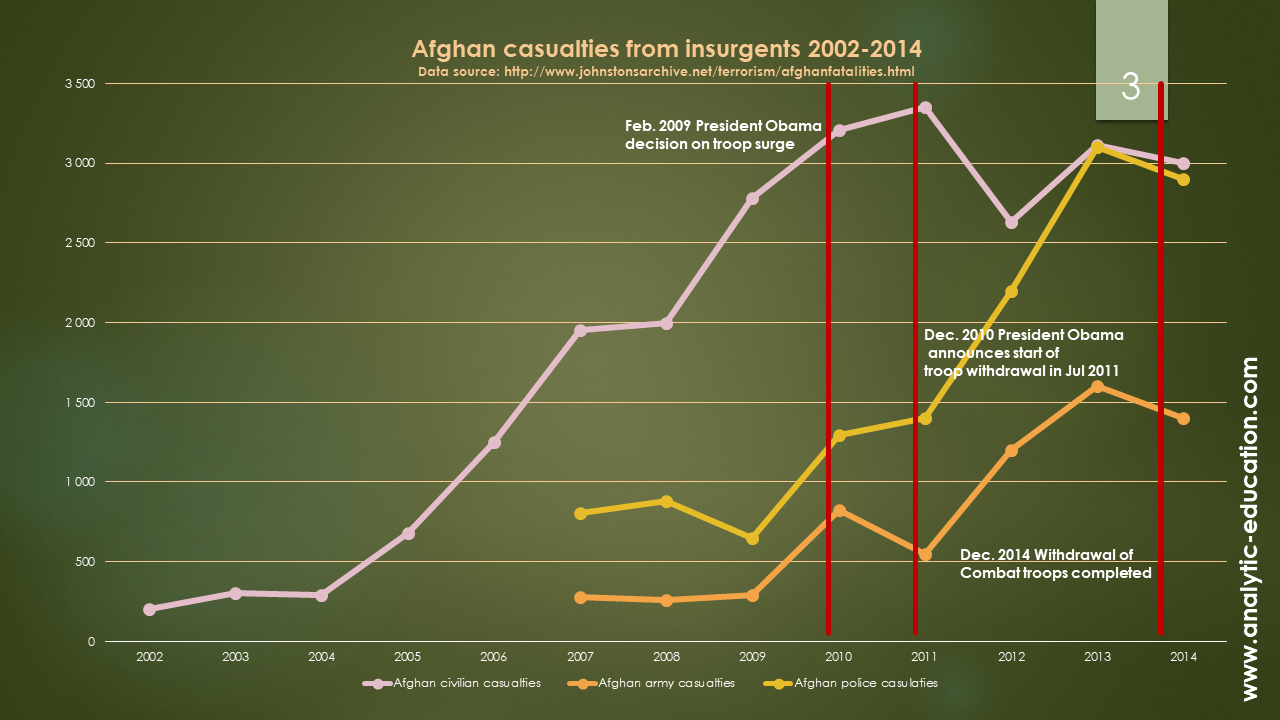
Insurgents were apparently going for a Pareto Optimal position.
US forces returned in 2016. Reintroduction of a strange attractor started a new game.
Since then, the number of terrorist attacks remained stable at the medium level of activity.
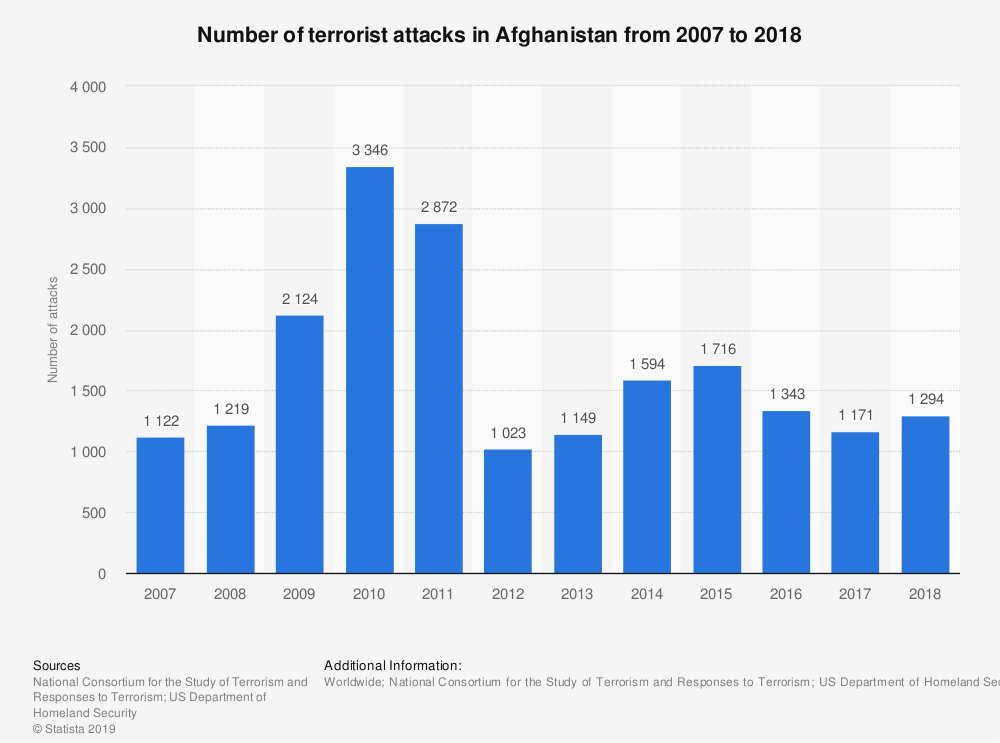
Civilian casualties stayed fairly stable too, albeit at a record high.
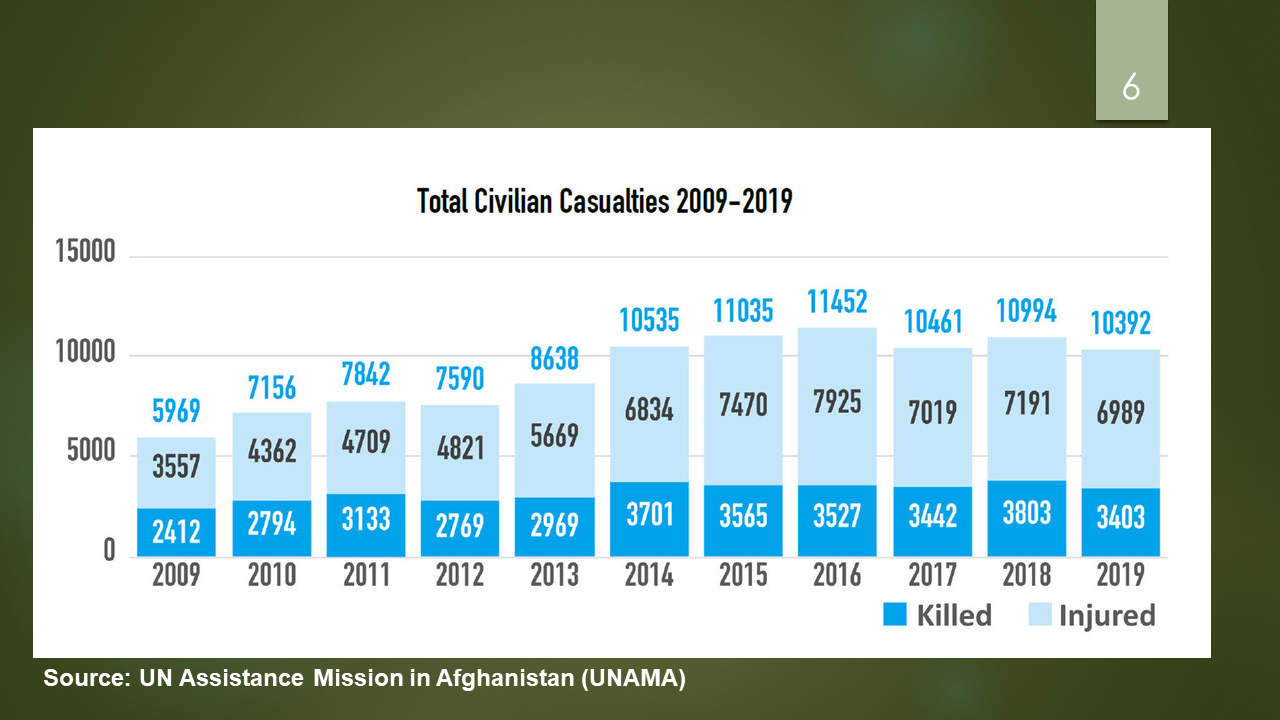
DI did not appear to care much about either the meddling by FORFOR or their own losses. They kept pressing for a preferred equilibrium, regardless.
But following a pattern that has by now become familiar, monthly US combat casualties remained stable in low single digits.
Also in this case, it can be (arguably) explained by the unfolding of an alternative future triggered by FORFOR reacting to Brightman´s model.
It looks like the US arrived at a decision to negotiate a withdrawal not so much because of DI activity as by seeing their role dwarfed by the intensity of the conflict boiling around them. Between 3 and 27 March 2020 alone, the Taliban claimed 405 attacks against Afghan security forces.
DI thus continue pressing towards a Pareto Optimal position.
Looking from another angle, DI may, after all, be yet planning a position shift towards an inchoate equilibrium. And are signalling their resolve and strength. A higher bargaining ground could allow DI to wring a higher Pareto improved payoff within the constraints of an eventual interrrupted equilibrium. If the game ever comes to it, that is.
Either way, DI do not seem to perceive FORFOR as much of an obstruction to their strategy.
5. Refuting Brightman´s model validity for predicting armed insurgency threat dynamics in Syria.
The Syrian conflict offers yet another intriguingly complex scenario that resists structured analysis.
For a start, it involves a large number of players applying vastly varying strategies in pursuit of conflicting objectives. Complications stem in part from the fact that one of the players – self-styled Islamic State – is territorially external to the conflict theatre. In plain language, an invader. Instead of DI, it should be rather called FIIF, for “Foreign Insurgent Invasion Force”.
Syrian conflict is thus by definition an international rather than an internal one.
Another complication arises from a situation where temporally parsed accurate and trustworthy data on incidents and casualties does not seem to exist. And without such data, the intention of refuting Brightman´s model loses much of its bite.
Judging by theatre reports, the various FIIF factions involved in the fighting have consistently displayed a “win or die trying” approach. Without deviation, they aimed at scoring a Pareto Optimal payoff by achieving a military victory. Neither money nor fighters seemed to be in short supply.
This situation harks back to an earlier discussion about challenges involved in predicting payoff preferences of a foreign player.
On a brighter note, the evolution of confrontation between Syrian ISF and DI (Free Syrian Army/Syrian National Army) in the Idlib province may be following a different script.
As of March 2020, Syrian ISF in Idlib were fighting an invasion by the Turkish army – a strange attractor – instead of DI. And the Turkish army is a firm proponent of a preferred equilibrium for FSA/SNA. I.e. a full military defeat of ISF.
One reason Turkish troops might have felt compelled to jump into the fray was to compensate for DI passivity that suggested readiness for bargaining. If true, Turkey will have thus deliberately become an obstacle to an inchoate equilibrium.
According to (reversed) Brightman´s model, this situation will call for DI to provide intelligence about Turkish troops to ISF. The expectation will be that it will allow ISF to increase combat intensity. And a spike in casualties might prompt Turkish troops to withdraw.
ISF and DI will then become free to engage in unobstructed bargaining about payoff distribution under an inchoate equilibrium based on reciprocal passivity.
THAT would give Brightman´s model quite an interesting spin, wouldn`t it?
Alas, but this speculative inference is not really a product of analysis. It´s more of a hunch.
Sure, it requires a stretch of imagination to picture the game players – ISF (Assad) and DI (FSA/SNA) – taking the war in their own hands to aim at Pareto-improved payoff by means of colluding against both Turkish and Russian military involvement.
But stranger things are known to have happened in the past.
6. Conclusions.
-
No model can predict future with certainty. Future is radically indeterminate. It is random and the number of possible futures is infinite.
-
A construct predicting a particular future can prevent that future from happening. Knowledge of such a construct may lead to the taking of corrective measures. In their turn, the latter may result in the unfolding of an alternative future.
-
This assessment used only a small subset of open source data. It did not refute the possibility that armed insurgency threat dynamics follow patterns that can be predicted using game-theoretic reasoning.
-
Predicting payoff preferences of foreign players, i.a. in game-theoretic constructs, is inherently fraught with the risk of succumbing to the mirror-imaging bias that can result in a flawed judgement.
-
Overall, this assessment did not refute that strategic indicators suggested by Brightman´s model, when triggered, can signal an early warning about a probable unfolding of a specific future.
-
A superficial review of easily available and highly fragmented historic data does not refute at least some partial correlation of armed insurgency threat dynamics in past conflicts with Brightman´s indicators.
7. Sources and scope of data.
1.Empirical Studies of Conflict Project (ESOC).
ESOC identifies, compiles, and analyses micro-level conflict data and information on insurgency, civil war, and other sources of politically motivated violence worldwide.
ESOC was started in 2009 and has three objectives.
- Identify priority analytical questions for policy makers and implementers working to manage conflicts and create a mechanism to sanitize, aggregate, or otherwise modify the information and data needed to study these questions through academic research and analyses.
- Harness the expertise of leading scholars and empower them with the detailed conflict data required to provide cutting-edge analytical support and policy analyses to government agencies.
- Create and maintain a repository of quality micro-level data across multiple conflict cases and make these data available to a broader community of scholars and policy analysts.
Here is a list of current and past home institutions of ESOC scholars:
- Centre for International Security and Cooperation (CISAC), Stanford University
- Hoover Institution, Stanford University
- Georgetown University, McDonough School of Business
- Princeton University, Woodrow Wilson School of Public and International Affairs
- RAND
- Seattle Pacific University
- Stanford University, Department of Political Science
- UC Institute on Global Conflict and Cooperation (IGCC)
- UCLA, Department of Political Science
2. Worldwide Incidents Tracking System (WITS).
It was operated until 2012 by the US National Counterterrorism Centre.
3. Statista GmbH.
A world leader in market- and consumer-generated data that offers over one million statistical products.
All in all, the data subset used in this assessment includes structured information on more than 31,000 DI activities (incidents), as well as some 400 additional data points and four charts collated from multiple sources.


